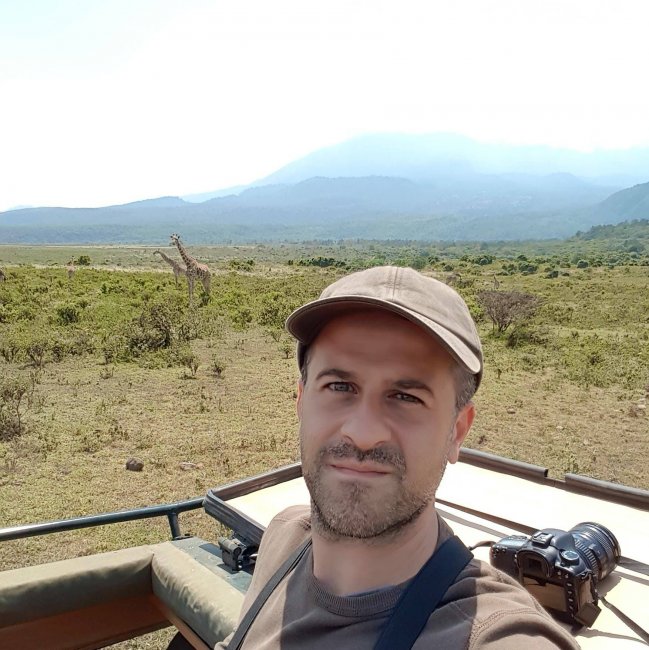
GALIMBERTI ANDREA
- U04, Floor: 4, Room: 4009
Biography
The interest in zoology and related disciplines (biodiversity, evolution, ecology of interactions) guided the training and the development of the research lines of Andrea Galimberti. His knowledge acquired thanks to different research experiences, conducted both in Italy and in other EU and extra EU countries, make the figure of Andrea Galimberti in line with that of a modern biologist able to alternate field research, laboratory analytical activities, write project proposals and valorize his work by publishing scientific papers and attending to conferences. In 2007, Andrea Galimberti contributed to the foundation of the ZooPlantLab, a multidisciplinary research group where he developed his knowledge in zoology, and integrative biology, aiming at interpreting the different aspects of biodiversity. He studied different environmental typologies interested by conservation issues and inhabited by species at risk of extinction. He identified or collaborated to the description of new species (both invertebrates and vertebrates) and he also investigated emerging problems dealing with the loss of biodiversity and habitat fragmentation. Since the beginning of his research career, Andrea Galimberti collaborates with numerous protected areas and parks and combines his passion for field zoological activities (monitoring campaigns, bird banding, entomological surveys) with focused research aimed at biodiversity conservation. The most important point in his research activities is the topic of biological identification. He addresses this issue at different levels of complexity (species, populations, and communities) by using molecular techniques (e.g., DNA barcoding) and high throughput sequencing techniques (DNA metabarcoding) and combining these with morphological and ecological approaches. Currently, he is mainly involved in research projects aimed at the characterization of functional diversity and ecological interactions in natural parks, urban green areas, and agroecosystems. Since 2021 he is involved in the research team that coordinates the B-Green initiative, a project aimed at increasing the green areas of the Milano-Bicocca’s infrastructures.
Publications
Ancillotto, L., Baratti, M., Rocha, R., Rato, C., Mata, V., Galimberti, A., et al. (2026). Islands as biodiversity arks: the role of insular populations in preserving bat DNA-barcoding diversity. MAMMAL RESEARCH, 71(1 (January 2026)) [10.1007/s13364-025-00833-x]. Detail
Maggioni, D., Tommasi, N., Colombo, B., Biella, P., Galimberti, A. (2025). Mitochondrial genome and cox1 diversity of the European orchard bee. THE EUROPEAN ZOOLOGICAL JOURNAL, 92(1), 1429-1441 [10.1080/24750263.2025.2580745]. Detail
Ranalli, R., Galimberti, A., Labra, M., Biella, P. (2025). Enhancing urban biodiversity: the potential of flower strips for pollinator conservation. Intervento presentato a: PhD Biodiversity Day - NBFC, Università di Padova. Detail
Tagliabue, A., Furfaro, G., Galimberti, A., Bruno, A., Zane, L., Pallavicini, A., et al. (2025). eDNA Metabarcoding Applications Across Italian Marine Coastal Ecosystems: An Overview. ENVIRONMENTAL DNA, 7(2 (March–April 2025)) [10.1002/edn3.70075]. Detail
Nicolosi, G., Galimberti, A., Tommasi, N., Isaia, M. (2025). The invasive tropical planaria Bipalium kewense invades urban subterranean habitats in the city of Catania (Sicily, Italy). BIOLOGICAL INVASIONS, 27(1) [10.1007/s10530-024-03493-1]. Detail
Research projects
Awards
Research and teaching assignments
- Professore a contratto - Università degli Studi di Milano-Bicocca - Università degli Studi di MILANO-BICOCCA, 2016
- Professore a contratto - Università degli Studi di Milano-Bicocca - Università degli Studi di MILANO-BICOCCA, 2015
- Professore a contratto - Università degli Studi di MILANO-BICOCCA, 2016
- Professore a contratto - Università degli Studi di MILANO-BICOCCA, 2016
- Ricercatore universitario a t.d. - Università degli Studi di MILANO-BICOCCA, 2018 - 2021
- Ricercatore universitario a t.d. - Università degli Studi di MILANO-BICOCCA, 2017 - 2018